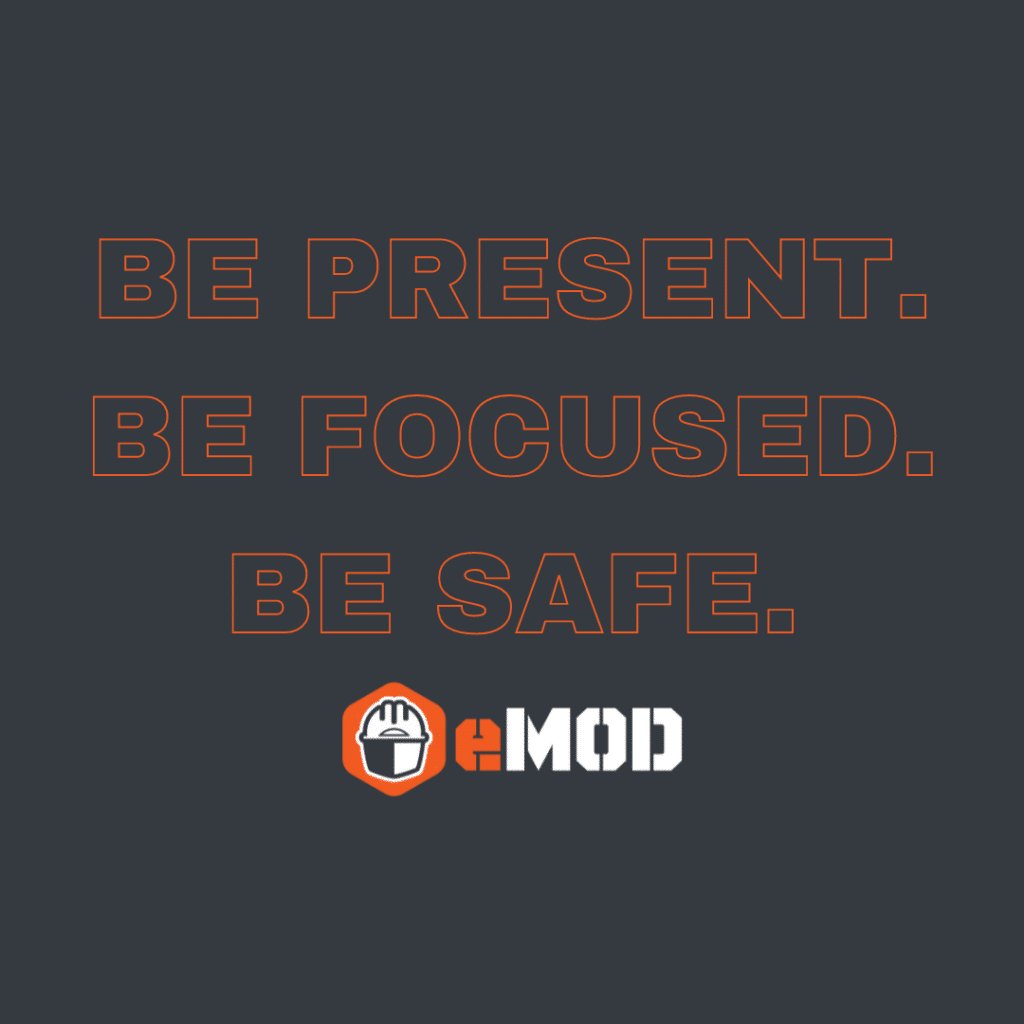
Hensel Phelps’ Kabri Lehrman-Schmid shares how mental health and cultural bias can impact physical safety in a dangerous profession
By Kaitlin Frank
When we’re confident and comfortable, we’re capable of great things. When we’re worried, uneasy, or distracted, our work will suffer. And when it comes to safety in one of the most dangerous professions — construction — being just a little “off” puts us in harm’s way.
That’s why the emerging and important concept of “psychological safety” has become a personal passion of mine.
The construction industry has made great strides when it comes to physical safety — and we’re proud of the role eMOD is playing to help keep our workers safe. But when it comes to mental health and cultural bias/discrimination, our industry has a long way to go. There’s little question in my mind that there is a clear link between the physical safety of our people and their psychological safety. However, the industry has yet to come to terms with the role employers play in supporting a culture of psychological safety.
As one of the growing but still small minority of women leaders in construction, I understand first-hand what it’s like to be questioned, stereotyped, and even discriminated against because of my gender. I don’t feel like it’s ever personally affected my work, but I’ve certainly witnessed how discrimination and bullying can create a hostile environment on the job site. In the short term, these kinds of behaviors can cause distraction and injuries. Over the long haul, it can harm our colleagues’ mental health — and could be one reason why our industry’s suicide rate is much higher than others.
Though it’s a difficult subject, I enjoyed the chance to recently discuss psychological safety in construction with Kabri Lehrman-Schmid, a Seattle-based superintendent at Hensel Phelps, on the Elevate podcast with host Jason Schroeder.
After the podcast, I asked Kabri for a few more minutes of her time — because I wanted to ask her some more questions for our blog.
During our discussion, Kabri shared how her understanding of psychological safety grew through her involvement with industry initiatives about the seemingly separate issues of minority inclusion and suicide prevention. By bringing the information about these initiatives back to the job site, she developed stronger relationships with her staff and crews. She said these relationships paid off in employee engagement (inspiring employees to greater productivity and reducing distraction) and the development of a culture where employees felt comfortable asking for task safety clarification. She’s since become our industry’s leading voice about psychological safety, presenting at events like Safety Week and authoring pieces about the topic for notable industry publications.
You speak at events. You volunteer. You have two young children. How do you manage to do all of that and still, by all accounts, do your day job so well?
I have been able to find ways to use my strengths of public speaking and facilitation to drive productivity with both the efforts of my day-to-day job responsibilities and industry initiatives. The time I do carve out to focus on industry initiatives always ends up supporting the relationships I need to be successful in my day-to-day job. It’s a small industry, and what you give does come back around. I am lucky to have a very supportive family that is proud of the work I do.
How would you describe psychological safety as simply as possible?
Psychological safety in construction is intentionally creating a job site or team culture that supports the inclusion and engagement of your people. We must work to recognize and overcome the industry’s cultural stigmas of bias and mental health.
How did you first make the connection between psychological safety and construction?
After I was promoted to my current position as a project superintendent, I was getting asked quite often to speak at different events — just based on my gender and my title alone — and I wanted to make use of those opportunities. So I started incorporating the industry contributions I was already making in two different realms: mental-health-focused organizations that I found through workplace initiatives, and women-specific professional groups and apprenticeship programs.
At first, I saw those efforts as very separate. As I started speaking more often about the topics of mental health and inclusion, I realized there was a general theme about supporting our people in ways that have not been mastered by our industry. It was a combination of Ted Talks and reading that brought me to the understanding of psychological safety. Striving to create a work environment that encouraged participation — and supported people — would earn the well-published results of productivity in diverse teams. It would also reduce the potential for distraction or fear of team members, supporting the physical safety performance of a team. Immediately, the topic of psychological safety had a place with all the other safety topics and processes we’ve mastered as an industry. I realized that field management had an extremely effective role to play in the building of this culture.
I was also able to tap into my company’s ongoing focus on leadership skills training and increasing the engagement of our employees. I found that there was so much potential to apply the concept of psychological safety to the industry-standard metrics of production and safety across many initiatives and existing systems — including HR and Legal.
What does psychological safety look like in construction?
Well, there aren’t many (construction-specific) resources right now. You could watch a Simon Sinek TED talk. You could read a bunch of general-industry leadership books (I highly recommend “The 4 Stages of Psychological Safety” by Timothy Clark). But in the field, you don’t often have the time or the interest to make that translation. So I think that it’s necessary to get more resources out there, to be able to put psychological safety in a format that’s usable on a field level. In 2021, we’re already seeing a movement towards a greater discussion about “holistic health” — in fact, this is the topic for national Construction Safety Week.
What are some ‘formats’ or programs that can help in construction?
As an industry, we have an advantage — we can utilize a lot of the existing safety processes and procedures because they’re already ingrained in the work we do. That includes toolbox talks and short-format training that would provide enough information, but in a short enough format to be worth taking a break from the task at hand. We can add resources to existing and required procedures like activity hazard analysis or job site safety plans.
When you’re talking with construction leaders, how do you explain why psychological safety is important?
A worker that is distracted from their task is a worker who’s not producing at their highest capacity — they are also in danger of harming themselves and their crew. Distraction can be a result of their experience of biased behavior, mental health symptoms, or fear of a negative response to questions they have. As an industry, we’re unpracticed in addressing these topics. And we’ve created a stumbling block by questioning the appropriateness of blurring the line between “personal” and “professional.” Creating relationships that go a little bit deeper will motivate people. It will keep them focused, improve the positive vibes of the work that we’re doing, and get people engaged and willing to speak. There is then a component of education and research for management — opportunities to provide resources to better support our people. And so the value, for management, is increased production and engagement of your people.
How does feeling comfortable and psychologically safe affect an individual’s work?
People may feel uncomfortable with sharing something that is going on in their personal lives that may be affecting their ability to work. Whether they are going to be late because they have somebody they’re caring for who’s sick, or they’re leaving for a family counseling appointment, opening the door to that conversation allows for management to help recognize and resolve issues that support the worker coming back. Without that effort of understanding and support, you might lose a valuable employee. When we are in a culture where we’re not so fearful about getting fired or ridiculed for sharing, it allows for people to bring their whole selves to work. That’s comfort for the employee, and resources saved for the employer.
How would you describe the relationship between psychological safety and physical safety?
You may have an apprentice who doesn’t know how to use a harness and doesn’t feel able to speak up because of a culture that says, “You just watch and learn,” or, “I don’t have the time to waste teaching you.” That person is not going to understand how to keep themselves or their teammates safe when performing that task. And they may be distracted by the fact that they don’t have the right skills to perform the job safely. These problems could have been mitigated if the apprentice felt they could have asked a question. And it’s not just about new employees that don’t feel comfortable asking what to do. It’s any of us who might get distracted by other things going on in our lives. It might just be you’re not fully there, you’re not fully present at the task. A supportive team facilitates all workers being honest with where they are at.
if you had to score the industry when it comes to psychological safety, what grade would you give it?
I feel that’s such a regional question. I see a lot of movement here (in the Pacific Northwest). I’m part of committees that are full of industry representatives that want to talk about what it means to create a “culture of care” on a job site — so I’m a little bit jaded in a positive way. It’s also promising that I’ve never experienced outright pushback on the need to discuss topics related to psychological safety.
In fact, I recently spoke at a conference locally — and this was the first time many of the attendees had heard about these concepts. And the response was just like, “You’ve blown our minds. This is amazing. I never even thought of that.” I believe the time is right to introduce these topics — COVID has provided a demand for and acceptance of a different level of employee support.
What does the industry do well that — while maybe not using the ‘psychological safety’ terminology — support the spirit of it?
I’ve been impressed by the initiatives I’ve seen in some labor unions. They have systems of support and consolidated resources to further support their people. Some specific examples: LiUNA has rolled out nationwide resources to support suicide awareness and prevention campaigns. Iron Workers International promoted the “Be That One Guy” nationwide campaign against harassment of women on job sites. With large contractors, I think there’s been a shift in the last 10 years towards focusing on employee engagement. Now, that’s been mostly on the salaried side. I think that energy and resources have not yet reached the field. But coming at it from two different approaches, there are systems in place — and that includes the safety systems. We have systems in place that can influence the culture of the job site.
What are the biggest challenges or opportunities for change?
Letting go of the old stereotypes of an industry that is perceived as rough, as unwelcoming, and not open to diversity. When you think of a superintendent, you think of a middle-aged white male. And I think that looking at the stereotypes, which includes the culture of “man up,” includes the culture of “We’re going to work until we drop” — those inhibit taking new approaches, and having conversations about supporting your crews in different ways.
The stereotypes of a culture can be damaging because they create risk factors for mental health problems. That’s our biggest challenge right now: overcoming those negative cultural stereotypes and stigmas.
How can we ultimately change or let go of those stereotypes?
Conversations and education on the available (free) resources to support conversations in construction. I’m not suggesting people spend a ton of money on formal resources, third-party speakers coming in, or changing their core systems. It can be as simple as talking about topics that support a culture of psychological safety on your job site — defining a high expectation for behavior and teaching your people about the resources you provide. Not talking about it allows people to perpetuate the stereotypes. Especially on the heels of the challenges of the past year — and the blurring of lines between personal struggles and work pressures — the conversations need to continue.
Have you encountered any resistance to the idea of psychological safety?
Yes. Once I was speaking to a group of electricians. I was running a small group discussion about suicide, and you could tell they were slouching in the seats. I think somebody asked, “Why are we talking about this?” I shared a jarring statistic that is specific to Washington state — in 2018, we lost 6 workers to on-the-job injuries. And in the same timeframe, we lost about 125 construction workers to suicide. And I asked, “How many people in this room know somebody who has died by suicide?” Almost everybody raised their hands.
So, I don’t know that I won everybody over, but it became more clear to people that there’s an issue there, and we don’t necessarily have the systems to fix that right now. We fire people if they have a substance abuse problem. We fire people if they don’t show up on time three days in a row. We don’t have any systems to support that as an industry. Well, I’m asking people to be better managers and try to help people before they fire people.
If you’re a superintendent and just now learning about psychological safety, what actions can you take to help your crews?
To start with, build relationships with your team and encourage open conversations — it can be part of morning huddles or safety meetings. Ask people if they have questions on issues and invite them to speak. Start by simply inviting conversation and encouraging new voices.
Second would be education and resources. Do you know the available resources that you can provide to your people if they share a problem? Understand your health insurance coverage and your policies. You could go download free toolbox talks on mental health that are now available. And I would recommend the book, The 4 Stages of Psychological Safety, which provides a really simple scaffolding, if you will, on steps to consider for your team. It’s not overly theoretical, and it can be completely and directly applied to construction.
When you’re on the job, and you see that somebody is not in a good place, what’s the best way to help?
The first thing that I would recommend is to get in touch with union contacts in the area, who are now familiar enough with these challenges and can help provide some specific resources to help. If I saw somebody that was really distracted or acting in a way that wasn’t typical, I’d pull them aside at an appropriate time — not in front of everybody. I’d talk to them during a break just ask, “Are you okay?” And then just listen and try to help them get the resources they need. To do that, you need to build good relationships with your people, so that you can have those open conversations and know when something’s wrong.
One last question: Was there a question that I should have asked?
We’ve talked a lot about mental health and not much about diversity, as it relates to psychological safety. In the last year, diversity has been such a polarizing topic. I challenge other superintendents to learn more about their people. No matter what you think about politics, demographics, or the world, you are responsible for managing your people at work. And to be a good manager, you need to learn about their experience, and to acknowledge that people have different experiences. I think that overcoming bias starts with education and communication. And it is your personal responsibility to shut down any behavior that discourages communication. As a superintendent, you are the best person to set a high standard for behavior and effectively stop inappropriate biased behavior.
Want to learn more about psychological safety?
To learn more about psychological safety, we recommend the following resources:
- “The 4 Stages of Psychological Safety,” book by Timothy Clark
- “Why Good Leaders Make You Feel Safe,” TED Talk by Simon Sinek
- “A Superintendent’s Case for a Psychologically Safe Jobsite,” article in Construction Executive, by Kabri Lehrman-Schmid
- “Psychological Safety,” the Elevate Podcast featuring Kabri Lehrman-Schmid and Kaitlin Frank Kabri & Kaitlin
- The University of Washington Forefront Suicide Prevention Program developed construction-specific training on this topic.
- Construction Industry Alliance for Suicide Prevention: Toolbox talks, posters, free self-assessments
- Man Therapy: Approachable, humor-based men’s mental health resources
___________________________________
Kaitlin Frank is co-founder of eMOD and a superintendent at Dome Construction.

